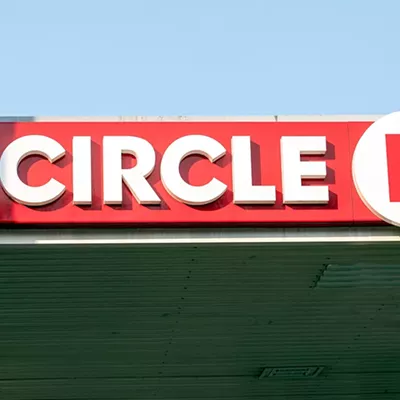Considerable evidence suggests Tucson has no more than five years to become a livable city. In that time, we will have to secure our water supply, create a robust system of public transportation based on renewable energy and create a system for growing and distributing our food. Failing to meet these monumental challenges will result in a city that is not worth occupying, and people will flee Tucson faster than the emigration of snowbirds during a superheated month of March.
The reason? We've passed Peak Oil. According to Kenneth Deffeyes, a petroleum geologist recently retired from Princeton University, we had used half the world's oil on Dec. 16, 2005. From this point forward, demand will increasingly outstrip supply. And the world's oil will be gone in 30 years, 40 if we are very conservative. Americans use a quarter of the world's oil, and we are not even remotely conservative.
Indeed, to a greater extent than any society in history, this country runs on oil.
Declining oil supplies threaten every element of American society. Forget the vulnerability of Wal-Mart's warehouse-on-wheels approach to their delivery of cheap plastic crap. Of far great significance is the three-day inventory of food carried by the big-box grocery stores throughout Tucson.
Famine looms large right here in the wealthiest country in the history of humanity.
Jimmy Carter warned us about this, and tried to solve the problem with the 55 mph national speed limit and modest investments in renewable energy.
But the last liberal in the Oval Office--and paradoxically the last conservative--was cast aside by the neoconservative agenda that began with Ronald Reagan's "Morning in America." Although Francis Fukuyama, the architect of neoconservatism, recently pointed out that neoconservatism should be abandoned on the junk heap of history, we're hurtling forward, pedal to the metal, apparently fully committed to collapsing under the weight of our own hubris. Think Easter Island, not the British Empire.
The result, in five years or less, will be the Greatest Depression. Thus, we have perhaps half a decade to build a habitable city. Substitutes for oil are not forthcoming: No renewable technologies are scalable within two decades, much less five years.
Two decades hence, the federal government will join everything else that is large and simply fade into irrelevance. The death of Wal-Mart is at hand, but that's a thin silver lining in a large bank of threatening clouds. Within another two decades, we will be riding horses except where renewable energy is used to power mass transit. All food will be locally grown, and the interstate highway system will collapse, just like the U.S. economy before it.
A few days after I saw the three horsemen kicking up dust in the sands of the Rillito River, I realized the identity of the fourth harbinger of the apocalypse: Famine was proudly catching a ride in the foothills in the oil man's Hummer. The irony is not lost on me; I was driving my own car when I saw his three buddies.
Guy McPherson is a professor of natural resources at the University of Arizona and author of several books, including Killing the Natives: Has the American Dream Become a Nightmare?










